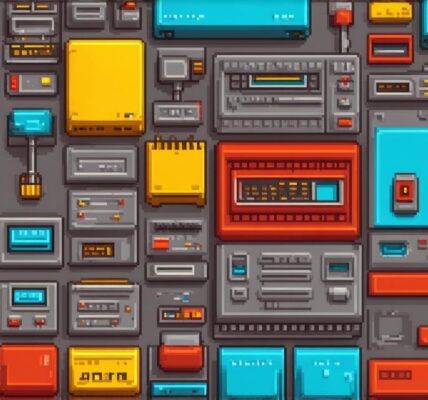
What are Video Game Designers?
Before we dive into the specific roles and responsibilities of video game designers, it’s important to understand what they do in general. In simple terms, video game designers are responsible for creating the content, rules, storyline, characters, and overall gameplay mechanics that make a video game fun and engaging for players.
There are many different types of video game designers, each with their own unique skills and responsibilities. These include:
- Game Designers: These are the individuals who create the core gameplay mechanics, rules, and systems that drive the game forward. They work closely with programmers to ensure that the game runs smoothly and is easy for players to navigate.
- Level Designers: These professionals are responsible for creating the various levels or environments within a game. They must consider factors such as flow, difficulty, and pacing when designing each level.
- Narrative Designers: These individuals focus on creating the story and dialogue that drives the game’s plot. They work closely with writers and other designers to ensure that the story is engaging and cohesive throughout the game.
- Character Designers: These professionals create the visual designs for characters within a game, as well as their personalities and behaviors.
- Animation Designers: These individuals are responsible for creating the animations that bring video game characters to life. They work closely with programmers to ensure that each animation is seamless and runs smoothly.
- User Interface Designers: These professionals create the menus, buttons, and other interactive elements within a game. They must ensure that these elements are intuitive and easy for players to navigate.
- Quality Assurance Testers: These individuals play through the game multiple times to identify any bugs or issues that need to be addressed before release.
The Roles and Responsibilities of Video Game Designers
Now that we’ve covered some of the different types of video game designers, let’s take a closer look at their specific roles and responsibilities:
- Game Designers: These individuals are responsible for creating the core gameplay mechanics, rules, and systems that drive the game forward. They work closely with programmers to ensure that these elements are easy for players to navigate and run smoothly.
- Level Designers: These professionals are responsible for creating the various levels or environments within a game. They must consider factors such as flow, difficulty, and pacing when designing each level. They also work closely with other designers to ensure that each level fits seamlessly into the overall narrative of the game.
- Narrative Designers: These individuals focus on creating the story and dialogue that drives the game’s plot. They work closely with writers and other designers to ensure that the story is engaging and cohesive throughout the game. They may also be responsible for creating character backstories, dialogue trees, and other narrative elements.
- Character Designers: These professionals create the visual designs for characters within a game, as well as their personalities and behaviors. They work closely with writers and other designers to ensure that each character is fully realized and feels like a real part of the game’s world.
- Animation Designers: These individuals are responsible for creating the animations that bring video game characters to life. They work closely with programmers to ensure that each animation is seamless and runs smoothly. They may also be responsible for creating environmental effects, such as weather or particle systems.
- User Interface Designers: These professionals create the menus, buttons, and other interactive elements within a game. They must ensure that these elements are intuitive and easy for players to navigate. They may also be responsible for creating visual effects, such as sound and haptic feedback.
- Quality Assurance Testers: These individuals play through the game multiple times to identify any bugs or issues that need to be addressed before release.




